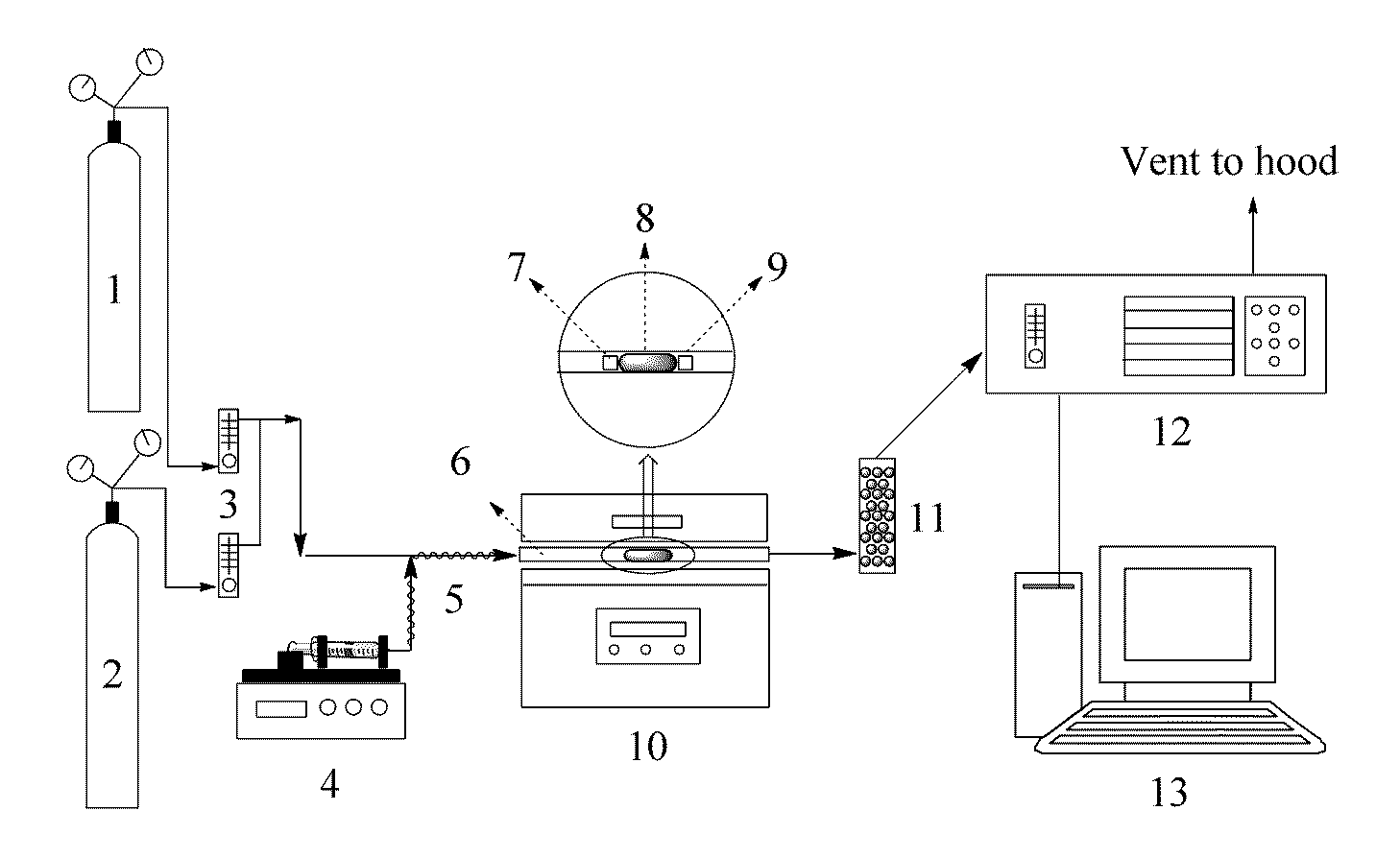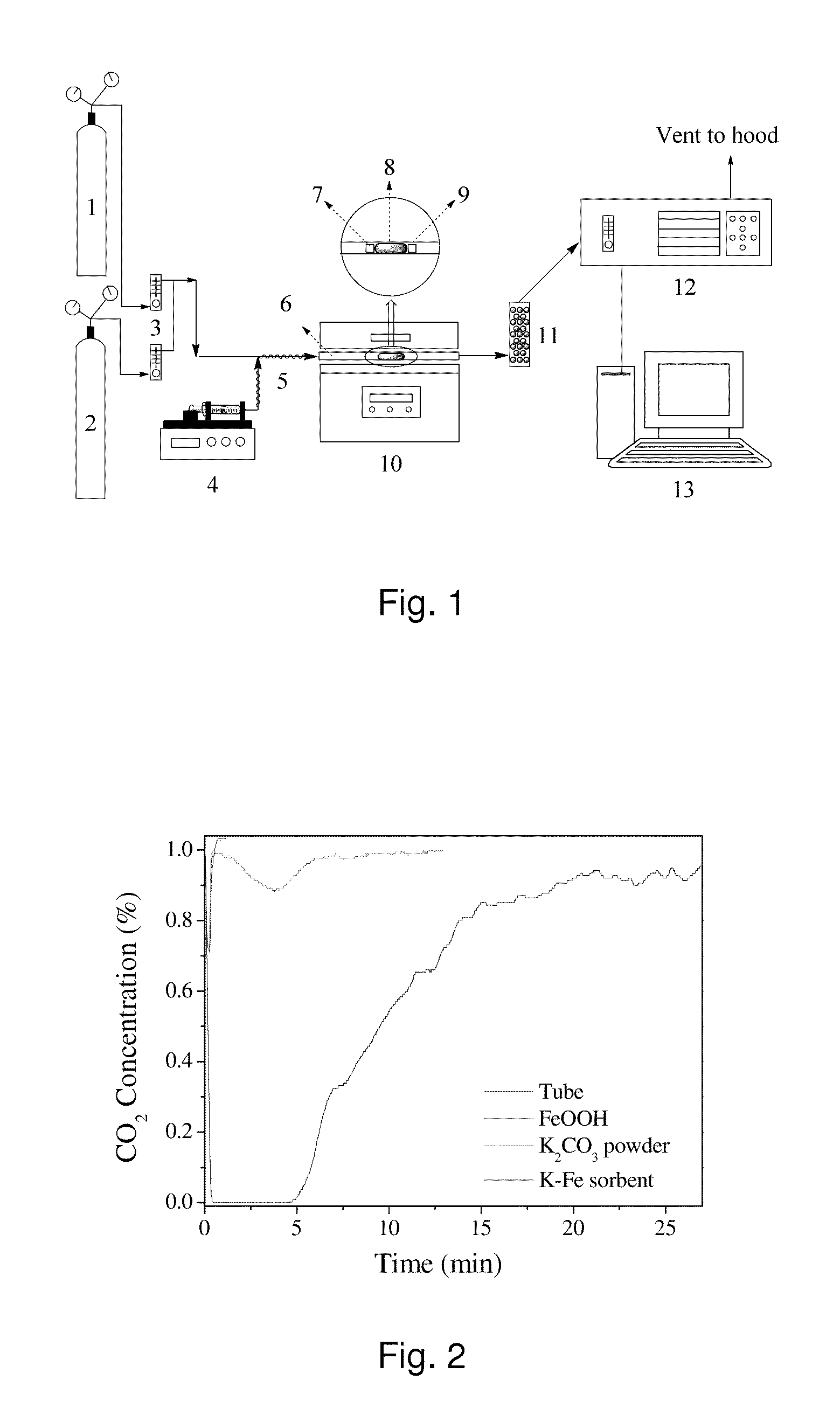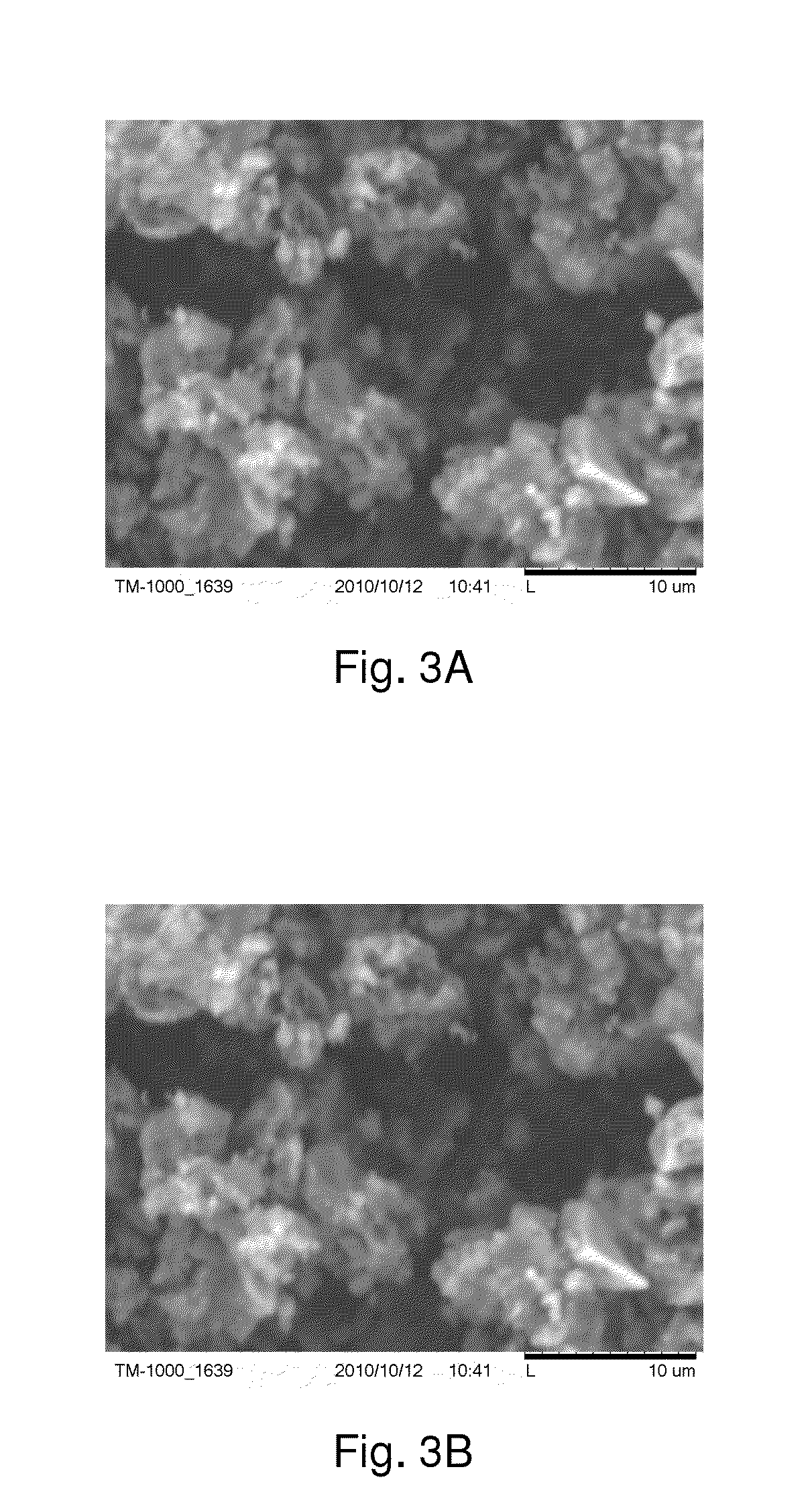CO2 Separation Using A Solid K-Fe Sorbent
- Summary
- Abstract
- Description
- Claims
- Application Information
AI Technical Summary
Benefits of technology
Problems solved by technology
Method used
Image
Examples
Embodiment Construction
I. Materials and Methods
A. Reagent and Materials
[0018]All the reagents used in these experiments were of analytical or higher grade without further purification. Potassium carbonate was purchased from VWR International, LLC. (West Chester, Pa.). 4-20 mesh calcium chloride pellets were obtained from Fisher Scientific Inc. (Fair Lawn, N.J.). Nanoporous FeOOH was provided by Kemira Water Solution, Inc. (Bartow, Fla.). Deionized (DI) water was used for preparation of all the sorbents tested in this research.
B. Sorbent preparation and Characterization
[0019]The first step of preparing the K—Fe sorbent was to add 10 g FeOOH to 50 mL potassium carbonate solution (10 wt-%), followed by stirring the mixture with a magnetic stirrer at room temperature for 24 hrs and drying it in a rotary vacuum evaporator at 70° C. The morphological characteristics of the supporting material (FeOOH) and the synthesized K—Fe sorbent were analyzed using a Hitachi TM-1000 tabletop scanning electron microscope (SE...
PUM
 Login to View More
Login to View More Abstract
Description
Claims
Application Information
 Login to View More
Login to View More - R&D
- Intellectual Property
- Life Sciences
- Materials
- Tech Scout
- Unparalleled Data Quality
- Higher Quality Content
- 60% Fewer Hallucinations
Browse by: Latest US Patents, China's latest patents, Technical Efficacy Thesaurus, Application Domain, Technology Topic, Popular Technical Reports.
© 2025 PatSnap. All rights reserved.Legal|Privacy policy|Modern Slavery Act Transparency Statement|Sitemap|About US| Contact US: help@patsnap.com



